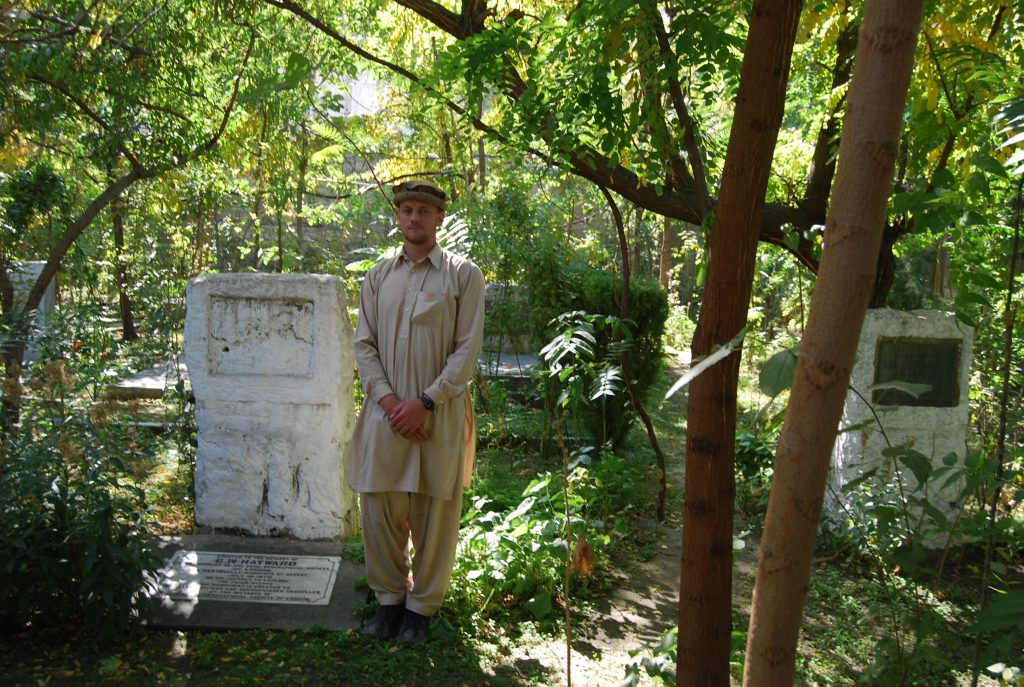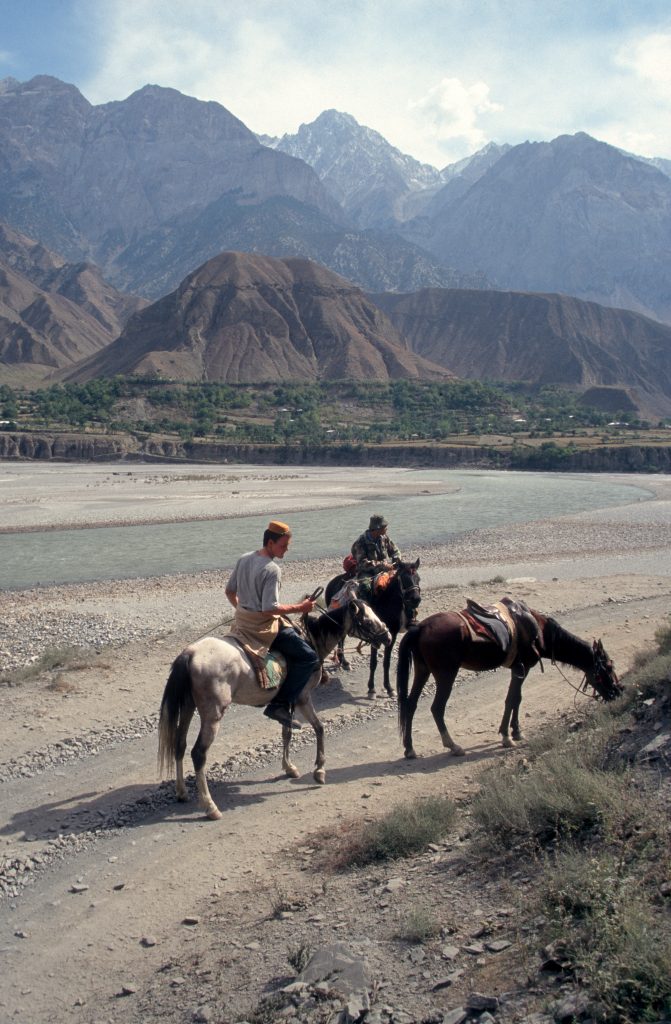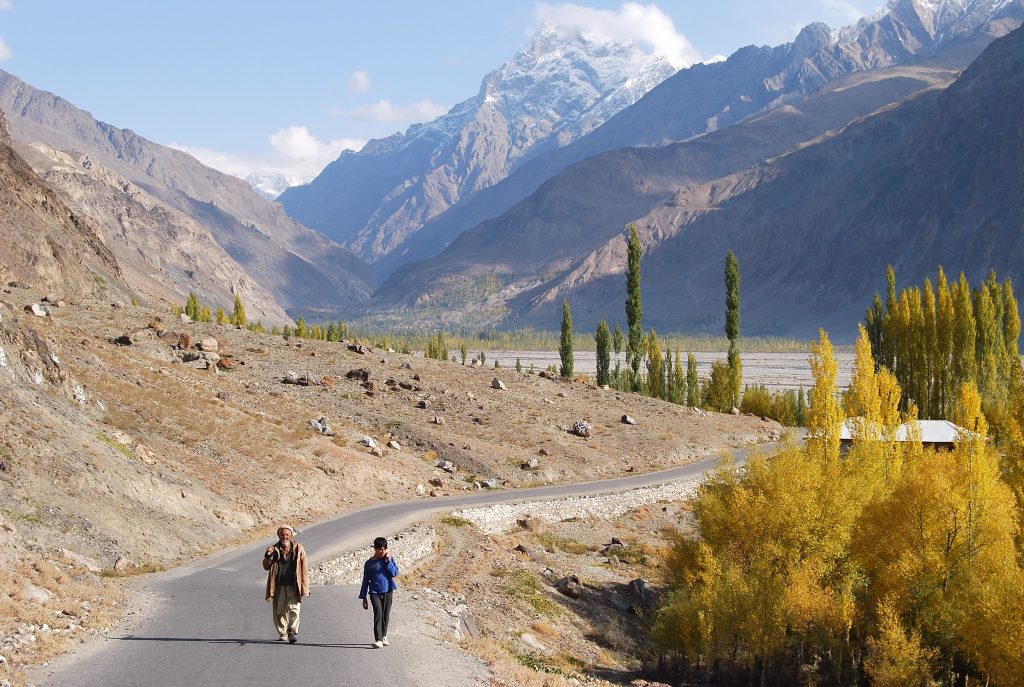Interview: Tim Hannigan, British travel and history writer
By Ali Bhutto | Interview | Published 8 years ago
When an 18-year-old surfer from the beaches of Cornwall accompanied his father on a tour of Gilgit-Baltistan in October 1999, little did he know of the extent to which the trip would sow the seeds of his imagination. Until that point, the only slopes that Tim Hannigan had scaled were those of waves. But travelling on roads that snaked through valleys of the world’s highest mountain ranges, Hannigan was introduced to the arena of the Great Game. From then onwards, whether he was at home in Cornwall, or on the beaches of Hawaii, he found himself immersed in books on 19th century explorers and spies — players of the Great Game — who had dared the wild, mountainous frontier long before him. Like them, Hannigan too would be lured back to explore further and pen Murder in the Hindu Kush (2011), a historical account of the life of 19th century British explorer, George Hayward. Subsequently, Hannigan travelled extensively in Indonesia and authored Raffles and the British Invasion of Java (2012), A Brief History of Indonesia (2015), and A Brief History of Bali (2016), while his upcoming work, A Geek in Indonesia, is expected this year. In this wide-ranging interview, Tim Hannigan shares interesting views on his travels in Gilgit-Baltistan, characters of the Great Game and the very concept of travel writing.

Tim Hannigan at George Hayward’s grave in Gilgit, in 2009. (Photo: Tim Hannigan)
What was it on that initial trip to Pakistan that turned on the switch inside of you and made you want to explore further?
Actually, although I was enthralled by the physical landscapes, there was no instant turning on of the switch during the first trip. But in the months after I went home I began to read books about the region, particularly John Keay’s brilliant histories of exploration and the Great Game, When Men and Mountains Meet and The Gilgit Game. That was the spark that really set me off — the meeting of spectacular geography and spectacular history. It’s a combination which has been vital for me ever since, and not just on the subject of northern Pakistan. The books I’ve written about Indonesia have also been about history, but history in the context of geography, past and place combined.
In 2009, while following in the footsteps of George Hayward in Gilgit-Baltistan, what precautions did you take to ensure your safety?
I didn’t take any at all! I travelled, as usual, by a combination of local minibuses, hitchhiking and walking, and stayed in cheap guesthouses and local homes. I suppose I was wearing a shalwar kameez and a pakol — if you could call that a safety precaution! I’ve never felt any sense of threat in Gilgit-Baltistan — apart from the condition of the roads. However, I should point out that in 2009 I travelled in and out via China, from the north, and never went further south than Gilgit. At that time the whole of the north felt very far removed from political violence or anti-western sentiment. Five years earlier I had spent time in and around Peshawar, and then travelled slowly by road, up through Khyber Pakhtunkhwa to Chitral, which I probably wouldn’t have felt comfortable doing in 2009 — or today, sadly.
How did the locals react to you?
I can safely say that of all the places I’ve travelled in the world, northern Pakistan has always been the most welcoming. The warmth of the response to a foreign traveller there is overwhelming. I think that’s largely a deep-seated part of local culture, but it’s also important to remember that some areas, particularly Hunza, had quite a developed tourist industry back in the 1990s, and many locals used to make their living from foreign tourists. They tend to be very grateful to any foreigner willing to ignore the negative press and make the journey today.
To what extent is the romantic appeal of a wild eastern frontier a creation of western sensibilities and culture?
There’s absolutely no doubt that the West has long used supposedly ‘unknown’ parts of Asia — especially Tibet and the Himalayas — as a playground for its collective imagination, and has cooked up some nonsensical and, at times, derogatory ideas in the process. But it’s worth remembering that postcolonial scholarly understandings of ‘Orientalism’ see it as a means of knowing — and thereby controlling — ‘the East,’ so the appeal of unknown territory in some ways runs contrary to that. And every culture in the world has its own imaginative wild frontier, at both local and international levels. For China it is Xinjiang; for Indonesia it is Papua. Even within Pakistan, the far north and west can serve that purpose. The important thing to remember is that a place that we see as “wild and unknown” is almost always simply “home” to somebody else.
Which player of the Great Game do you most identify with and why?
Without a doubt it’s George Hayward himself. For me, he always stands apart. While many of the other figures are fascinating, their committed role as agents of empire has always left me unable to really identify with them. But Hayward’s individualism, his unwillingness to ‘play the game’ — which is probably what got him killed in the end — makes him easier to connect with from a modern perspective. Besides Hayward, I’ve always found Dr Gottlieb Leitner hugely appealing — although I was very unkind to him in Murder in the Hindu Kush. There’s little doubt that he was some kind of genius, linguistically if nothing else, and his first sympathies were always with the people of what he called Dardistan, rather than with the British Empire. Finally, I’m tantalised by the character of the Pundit, Mirza Shuja. He made the most incredible journeys, and I’d love to be able to understand what it all meant to him personally, what his motives were.
What are your views on one of the more mysterious figures of the Great Game — the 19th century Russian spy Yan Vitkevich?
Although it can sometimes be portrayed as an episode of romantic heroes on glorious escapades, the reality of the Great Game was often grittier, grubbier, and more tragic. Vitkevich fits into that. He’s very different from the ‘accidental Great Gamers’ like Hayward, in that he was clearly a professional spy. People often say that the Great Game was the precursor to the Cold War, but Vitkevich’s career, and his death — whether it really was suicide or was actually murder by his former bosses — could have come straight from the Cold War itself. If he was a fictional character he would belong to John Le Carré, not John Buchan.

Tim Hannigan in Chitral, in 1999. (Photo: Des Hannigan).
In glorifying the explorations of 19th century colonisers and being inspired by them, do you think contemporary travel writing ignores the darker realities of colonisation?
I think contemporary travel writing, and also narrative history writing, has a lot to answer for in that respect. At its worst it can indeed actively glorify the shady characters and bad deeds of colonialism, and even at its best it all too frequently dodges the issue. Specifically in the case of travel writing, it also routinely fails to confront the genre’s own historical relationship with colonialism. I find it pretty depressing that this is still the situation in the 21st century. That’s one of the reasons that I chose specifically to write about George Hayward. His story had the drama and the romance of exploration, but its essential context was the darker realities of colonial geopolitics in the Western Himalayas. It was a way to confront that, while also telling a great tale. On the other hand, there’s nothing to be ashamed of in finding the subject of the Great Game thrilling, because it is a fabulous story, and I’ve met as many Pakistanis and Indians who are as enthralled by it as Britons.
To what extent have you encountered terrains and landscapes that, although located on opposite ends of the planet, are strikingly similar to each other?
This is a really interesting idea, and of course it’s a natural human reaction to make comparisons and look for familiarity. I’ve spent quite a bit of time in the Atlas Mountains in Morocco, and that area often looks like Gilgit-Baltistan scaled down by a factor of 50 per cent. Even the islands of Bangka and Belitung in Indonesia occasionally remind me of my own homeland, Cornwall — the granite rocks, blue seas and yellow sands are the same. But of course, a landscape isn’t empty; it contains a culture, and that is always an entirely unique thing.
Which writers (travel or otherwise), are you inspired by?
The two writers I turn to again and again as a reader are Bruce Chatwin and Patrick Leigh Fermor, but it would be a very bad idea to try to emulate either of them, so I avoid that! When it comes to writing narrative history, I’ve been particularly influenced by Peter Hopkirk, John Keay and Giles Milton. In their different ways they have all mastered the trick of turning confusing historical material into a “good read”. In general, as a European writing about Asia, I hugely admire William Dalrymple. He has a tremendous assurance in his writing, but he’s engaged so thoroughly with his subjects that he deserves to feel confident, and he makes a brilliant job of giving equal privilege to local and European perspectives when he’s writing about history. I know he has sometimes been rather scathing of postcolonial critiques of travel writing, but in a way his more recent work could be seen as a positive and constructive response to those critiques — something we should all aspire to.
Tell us a bit about your writing habits on a day-to-day basis.
It very much depends what I’m working on. If it’s a history project there will be a big bout of background reading, note-taking and, hopefully archive work to start with, followed by a fairly short but very intense period of getting it all written down. With my second book, Raffles and the British Invasion of Java, I shut myself in a room in Yogyakarta, Indonesia, and more or less stayed in there until the first draft was done, two months later. Right now I’m in the early stages of a big project examining travel writing itself, which is rather different. At the moment I’m doing lots of reading, of both the genre itself and the scholarship around it, while also travelling to interview various travel writers, editors and scholars. But eventually I’ll still end up locked in a room somewhere, frantically writing it all up…

Yasin Valley (Photo: Tim Hannigan).
What advice would you give to writers and journalists who are starting out new?
Read, read, and read some more — and don’t just read the genre or subject area that you want to work in yourself. Read everything, and make sure you give at least as much time to reading as you do to your own writing. I’m always astonished by how many people there are who claim to want to be a writer, but who don’t seem to be particularly interested in books or journalism by other people. You wouldn’t trust a chef who doesn’t like to eat, would you?
Which other parts of Pakistan are you keen on seeing and when?
The high mountains of the north always draw me back, and there are enough hidden valleys up there to satisfy a lifetime of travel. But I’ve always regretted that I haven’t had the chance to explore Sindh — it has always struck me as an area absolutely drenched with history, and with remarkable landscapes of its own. I’m not quite sure when I’ll have a chance to get there, though.
Where to next?
I’m heading back to Indonesia — where I lived for several years — for a couple of months this summer. I have a new book about the country to launch in Bali and Jakarta, and some journeys to make in Sulawesi and Kalimantan for another possible project.
The writer is a staffer at Newsline Magazine. His website is at: www.alibhutto.com


